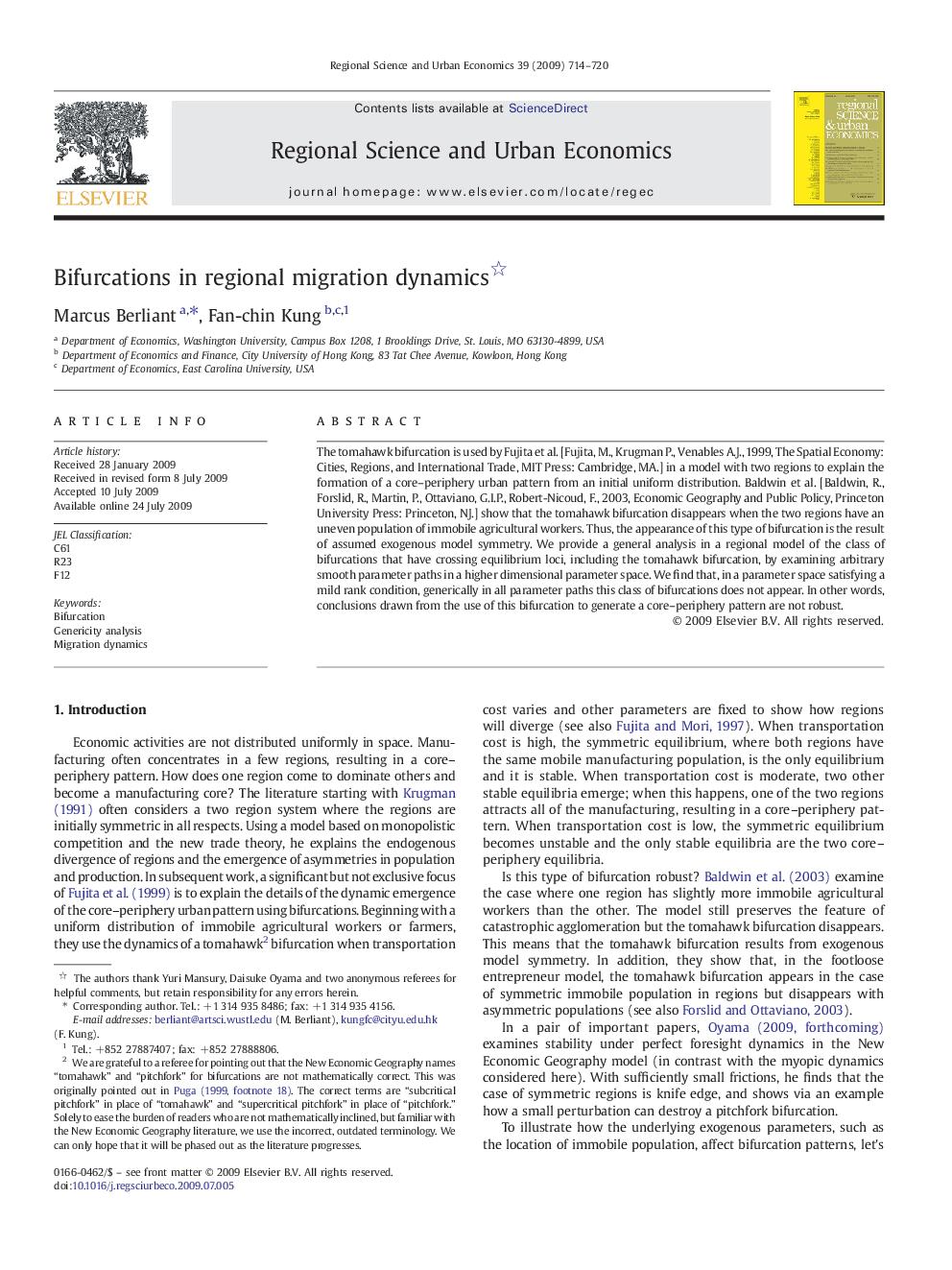| Article ID | Journal | Published Year | Pages | File Type |
|---|---|---|---|---|
| 983861 | Regional Science and Urban Economics | 2009 | 7 Pages |
The tomahawk bifurcation is used by Fujita et al. [Fujita, M., Krugman P., Venables A.J., 1999, The Spatial Economy: Cities, Regions, and International Trade, MIT Press: Cambridge, MA.] in a model with two regions to explain the formation of a core–periphery urban pattern from an initial uniform distribution. Baldwin et al. [Baldwin, R., Forslid, R., Martin, P., Ottaviano, G.I.P., Robert-Nicoud, F., 2003, Economic Geography and Public Policy, Princeton University Press: Princeton, NJ.] show that the tomahawk bifurcation disappears when the two regions have an uneven population of immobile agricultural workers. Thus, the appearance of this type of bifurcation is the result of assumed exogenous model symmetry. We provide a general analysis in a regional model of the class of bifurcations that have crossing equilibrium loci, including the tomahawk bifurcation, by examining arbitrary smooth parameter paths in a higher dimensional parameter space. We find that, in a parameter space satisfying a mild rank condition, generically in all parameter paths this class of bifurcations does not appear. In other words, conclusions drawn from the use of this bifurcation to generate a core–periphery pattern are not robust.
